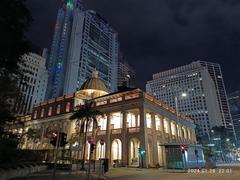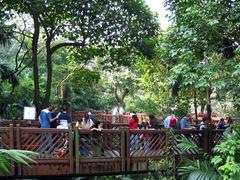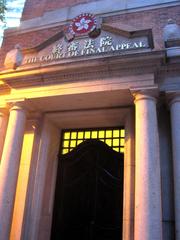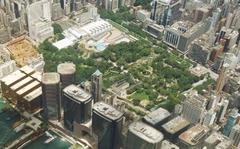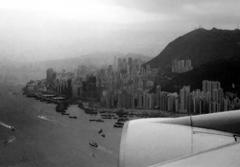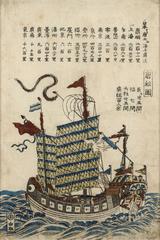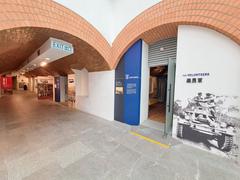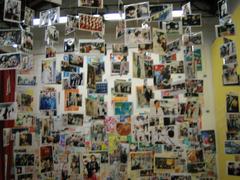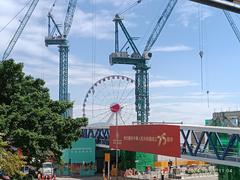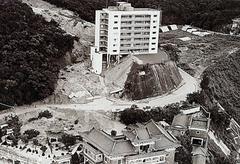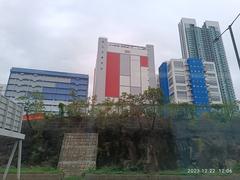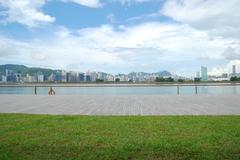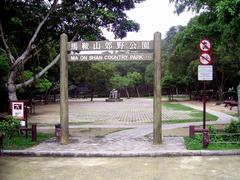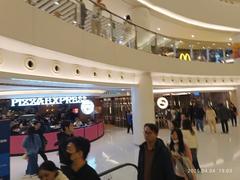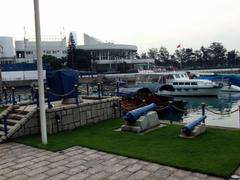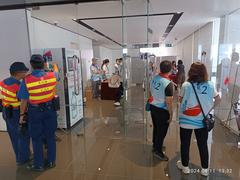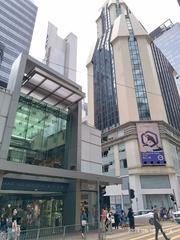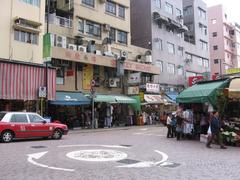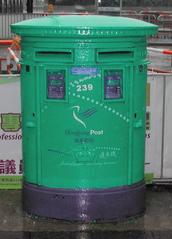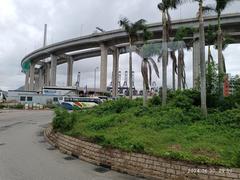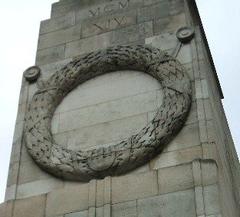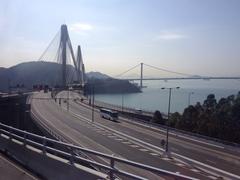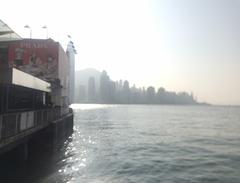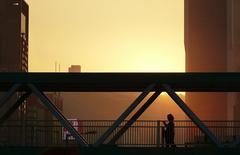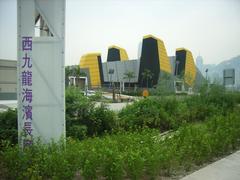University Museum and Art Gallery Hong Kong: Visiting Hours, Tickets, and Comprehensive Guide
Date: 14/06/2025
Introduction
The University Museum and Art Gallery (UMAG) at The University of Hong Kong (HKU) is one of Hong Kong’s most significant cultural institutions, offering a unique blend of historic architecture, world-class art collections, and educational programming. Situated in the historic Fung Ping Shan Building on HKU’s campus in Pokfulam, UMAG is a must-visit destination for art lovers, history enthusiasts, and curious travelers alike. With free admission, accessible facilities, and a vibrant schedule of exhibitions and events, UMAG provides an immersive experience in Chinese art, Hong Kong’s heritage, and global artistic dialogues.
For complete details on history, exhibitions, and up-to-date visitor information, consult the UMAG official history and visitor guide and the UMAG exhibitions page. Additional insights are available from the Hong Kong Antiquities and Monuments Office and My Art Guides.
Table of Contents
- Introduction
- Historical Background and Significance
- Visiting UMAG: Practical Information
- Educational Mission and Community Engagement
- Special and Temporary Exhibitions
- Visitor Experience and Practical Tips
- Frequently Asked Questions (FAQs)
- Conclusion and Key Takeaways
- References
Historical Background and Significance
Origins and Early Development
UMAG’s story begins in 1929, when philanthropist Fung Ping Shan funded a library focused on Chinese literature, arts, and culture. The Fung Ping Shan Library, designed by Leigh and Orange and built by Han Yu Company, was completed in 1932. Although Mr. Fung passed away before its completion, his legacy set the foundation for a major cultural institution (UMAG official history).
Transformation into a Museum
After World War II, the building was repaired and, in 1953, repurposed as the Museum of Chinese Art and Archaeology. The museum officially opened to the public in 1955, occupying the second floor of the Fung Ping Shan Building (UMAG official history). In 1962, the library collection was moved, allowing the museum to expand and later be named the Fung Ping Shan Museum of Chinese Art and Archaeology.
Institutional Evolution and Expansion
In 1975, the museum became an independent entity within the university. The merger with the University Art Gallery in 1994 led to the current formation of UMAG. The adjacent T.T. Tsui Building, opened in 1996, provided expanded gallery and office space, symbolizing UMAG’s growth (My Art Guides).
Architectural and Heritage Significance
The Fung Ping Shan Building is a Grade I historic building and a declared monument since 2018 (Hong Kong Antiquities and Monuments Office). Its architecture blends colonial and Chinese influences, with red-brick facades, arched windows, and tiled roofs. The 2013 installation of a lift by Nelson Chen Architects Ltd. enhanced accessibility without compromising the building’s historic integrity.
Collections and Curatorial Focus
UMAG’s collection exceeds 2,000 items, with a focus on Chinese ceramics, ritual bronzes, paintings, jade, wood, and stone carvings, spanning from the Neolithic to the Qing dynasty (Wikipedia; UMAG official history). Notable highlights include:
- The world’s largest assemblage of Yuan dynasty Nestorian crosses
- Exquisite blue-and-white Ming and Qing porcelain
- Traditional and modern Chinese paintings
- Significant Asian art from Japan, Korea, and Southeast Asia
UMAG’s rotating and thematic exhibitions place Chinese art within global contexts while addressing Hong Kong’s evolving identity (Time Out Hong Kong).
Visiting UMAG: Practical Information
Location and Directions
- Address: 90–94 Bonham Road, Pokfulam, Hong Kong Island, Hong Kong (UMAG Official Website)
- Public Transport:
- MTR: Sai Ying Pun Station (Exit C) or HKU Station (Exit B/A2), followed by a short uphill walk
- Bus/Minibus: Multiple routes serve Bonham Road and Pokfulam Road
- Tram: Water Street Station, approx. 300m walk
- Parking: Limited campus parking; public transport is recommended
Visiting Hours and Admission
- Tuesday–Saturday: 9:30 am–6:00 pm
- Sunday: 1:00 pm–6:00 pm
- Closed: Mondays, public holidays, and university holidays
- Admission: Free for all visitors (special exhibitions or workshops may require a fee)
- For the latest updates, check the official UMAG website.
Accessibility
- Wheelchair accessible with elevators and ramps in both buildings
- Accessible restrooms available on all public floors
- Guide dogs welcome
- Visitors needing assistance should contact UMAG at least three working days in advance (UMAG Visit)
Guided Tours and Special Events
- Guided tours are available in English, Cantonese, and Mandarin (advance booking required for groups of 10+)
- Regular public lectures, workshops, and youth programs such as the Youth Museum Professionals Training Programme
- For tour reservations and events, see the UMAG guided tours page and UMAG youth programmes
Nearby Attractions
- HKU Historic Buildings: Eliot Hall, May Hall, and the Main Building (declared monument)
- Pokfulam Reservoir: Nature trails and scenic views
- Sai Ying Pun District: Local shops and dining
- Other Museums: Hong Kong Museum of Medical Sciences, historic temples nearby (Lonely Planet)
Educational Mission and Community Engagement
UMAG is a teaching museum, supporting HKU students with object-based learning, internships, and in-gallery lectures (HKU Graduate School Newsletter). Outreach includes public talks, workshops, and youth programs to foster cultural appreciation and professional development in the museum field.
Special and Temporary Exhibitions
UMAG regularly presents dynamic exhibitions that highlight both regional and international art. Recent and notable exhibitions include:
- Bamboo Baskets: Chinese Origins, Japanese Innovations—A showcase of over 200 bamboo baskets (UMAG)
- Designing Jewels: 200 Years of French Savoir-Faire (1770–1970)—Exquisite French jewelry and craft traditions
- Rotating displays on Mongolian photojournalism, Italian Medici sculpture, and more (UMAG exhibitions)
Complementary lectures and expert talks from international institutions, such as the Rijksmuseum and Galerie Kugel, further enrich the museum’s offerings (UMAG).
Visitor Experience and Practical Tips
- Museum Shop: Catalogues, art books, and unique gifts inspired by the collections (HKU Press)
- Restrooms and Wi-Fi: Available on all floors; free Wi-Fi for digital content access
- Photography: Permitted for personal, non-commercial use in most galleries (no flash or tripods; restrictions may apply for special exhibitions)
- Visitor Etiquette: No food or drink in galleries; children under 12 must be accompanied; backpacks worn on the front
- Best Visiting Times: Weekday mornings are usually quieter
- COVID-19 Measures: Health protocols align with government guidelines as of June 2025
Pro tip: Explore the UMAG official website for virtual tours and multimedia content, including high-quality images, interactive maps, and visitor routes.
Frequently Asked Questions (FAQs)
Q: Do I need to buy tickets?
A: General admission is free. Some special exhibitions or programs may require tickets.
Q: What are the museum’s opening hours?
A: Tuesday–Saturday: 9:30 am–6:00 pm; Sunday: 1:00 pm–6:00 pm; closed Mondays and public holidays.
Q: Is the museum accessible?
A: Yes, elevators and ramps provide full barrier-free access.
Q: Are guided tours available?
A: Yes, by advance booking—available in English, Cantonese, and Mandarin.
Q: Can I take photos inside?
A: Photography is allowed for personal use in most areas, except where indicated.
Q: Is there parking?
A: Limited parking is available on campus; public transport is recommended.
Conclusion and Key Takeaways
The University Museum and Art Gallery at The University of Hong Kong offers a comprehensive and accessible cultural experience, blending Hong Kong’s architectural heritage with rich art collections and educational initiatives. With its free admission, inclusive facilities, and dynamic exhibition program, UMAG is a premier destination for anyone interested in East Asian art, Hong Kong history, and museum experiences.
To make the most of your visit:
- Check current exhibitions and events on the UMAG Official Website
- Download the Audiala app for personalized guides and updates
- Use public transport for convenience
- Explore nearby historical and cultural sites
Stay connected with UMAG via social media for the latest news and enjoy an enriching journey into the heart of Hong Kong’s artistic heritage.
References and Reliable Sources
- UMAG official history and visitor guide
- UMAG exhibitions page
- Hong Kong Antiquities and Monuments Office
- My Art Guides
- Lonely Planet - University Museum and Art Gallery, Hong Kong
- Trip.com - University Museum and Art Gallery, Hong Kong
- HKU Graduate School Newsletter - UMAG and Culture Resource
- HKU Press - UMAG Publications
- UMAG Social Media Channels

